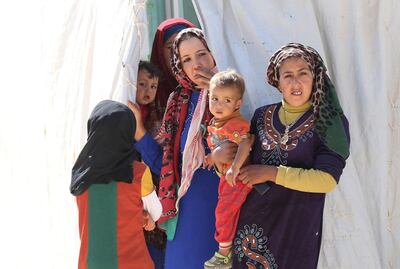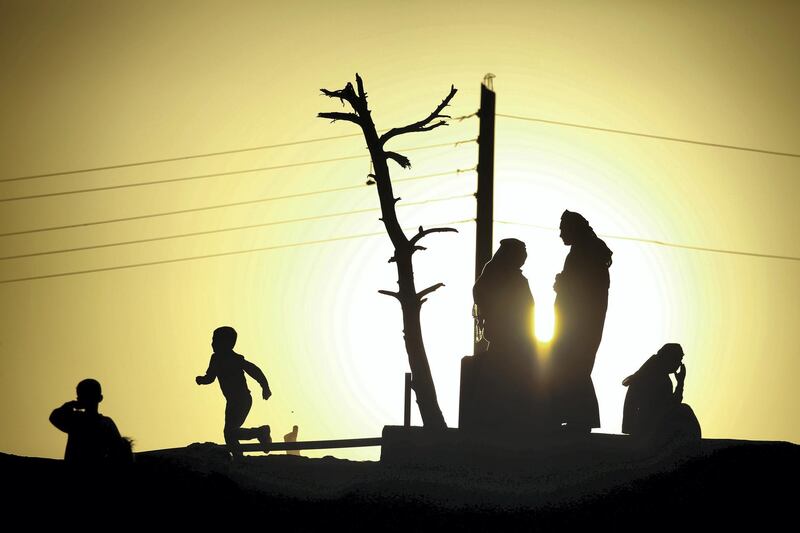The United Nations' efforts to end child marriage and the exploitation of vulnerable women in Middle East conflict areas is at risk from a shortage of funding, the regional chief of the UN Population Fund said.
The UNFPA, which focuses on sexual and reproductive health, has been working to help people displaced by wars in Syria, Iraq and Yemen.
"Yemen is very important, but the situation for people in Iraq and Syria also remains critical," Dr Luay Shabaneh, UNFPA director for Arab States, told The National.
His comments follow the high-profile death of British ISIS recruit Shamima Begum's newborn son in a Syrian refugee camp, due in part to poor maternity care. Aid organisations say that at least 100 other children from ISI-linked families have died either en route to the Al Hawl camp, where Ms Begum is living, or at the camp itself, highlighting the challenges facing refugees in the region.
Dr Shabaneh spent a week in Yemen at the start of the year, and has also visited Syria and Iraq to assess the rebuilding programme after more than eight years of war. He praised the work being done in Yemen, which the UN has declared the world's worst humanitarian crisis, despite difficult circumstances.
“They have very minimal resources, but are doing an excellent job working for 14 hours in mobile clinics on the front line," he said. “There are positive signs, with heroic women on the ground in the form of doctors and nurses, helping people.”
Saudi Arabia and the UAE, the main members of the Arab Coalition supporting Yemen's government in the fight against the Houthi rebels, together contributed $11 million (Dh40m) towards the UNFPA's female health programmes in the country last year. The agency is seeking $110.5m to help women and children in Yemen this year.
In Iraq, where the UNFPA assisted about nearly one million women and girls last year, the UNFPA has received just $6.4m of the $22m budget needed for its work in 2019.
In 2018, the UNFPA helped 3,022 girls in Iraq who were victims of violence, and 140,293 women. It also provided access to reproductive health services for 742,469 women and girls at 76 supported health centres in the country.
This year the fund aims to support 700,000 women with reproductive health care and 400,000 women and girls with gender-based violence response services in Iraq.
A target has been set to end preventable maternal deaths, improve family planning and halt cases of gender-based violence worldwide before 2021.
Dr Shabaneh said the safety of women should be a top priority as they are “suffering and dying in silence”.
Other groups are also working to help women and children affected by Middle East conflicts.
Save the Children recently opened a centre at the Zaatari camp for Syrian refugees in Jordan to offer education on the issue of child marriage and a way out for those trapped in wedlock, some of them as young as 13.
The camp is home to about 80,000 people, of whom roughly half are under 18.
Omar Khater, a 28-year-old Egyptian employee at GlaxoSmithKline in Dubai, worked at the centre for six months under his company's PULSE Volunteer Partnership programme.
“Conditions in the Zaatari camp are below normal living standards, but it is a whole community with families living together,” he said.

“Marriage of children under 18 is common, and sometimes far below that age. It is a long-term problem for them.
“These children lose their education and their place in the community.”
Read More
[ Syria's eight years of war have changed the world beyond recognition ]
[ Rescuing Shamima Begum’s baby would have been too dangerous, says British foreign secretary ]
[ Iraq's displaced have been forgotten, says top UNHCR official ]
Some families have up to 16 members living together in one tent. In families without a key household earner, children often end up leaving school to provide for their younger siblings. Girls are often pushed to stop their education and marry at a young age.
“Problems on the ground were opening specialist centres inside the camp offering knowledge for girls and their families,” said Mr Khater.
“Some have already discontinued their education, so the programme aims to recover them back in, and offer alternatives like sports and knitting," he said.
“We can measure the success by the number of girls and women going through these programmes compared with the prevalence of child marriage.
“The figures will be updated each year.”
Mr Khater said there were more than 40 non-governmental organisations working in the Zaatari camp to improve conditions for vulnerable women and children.





